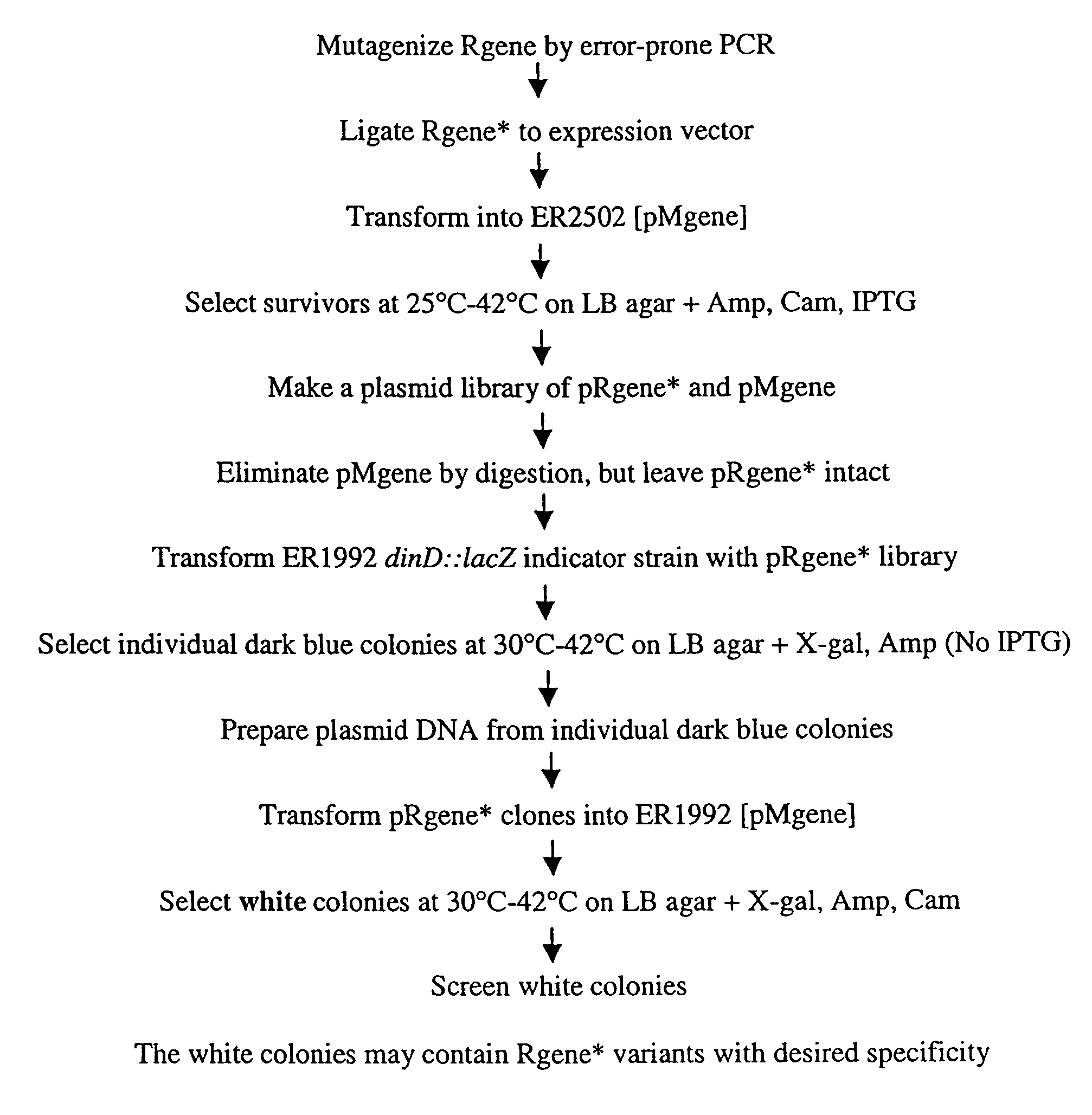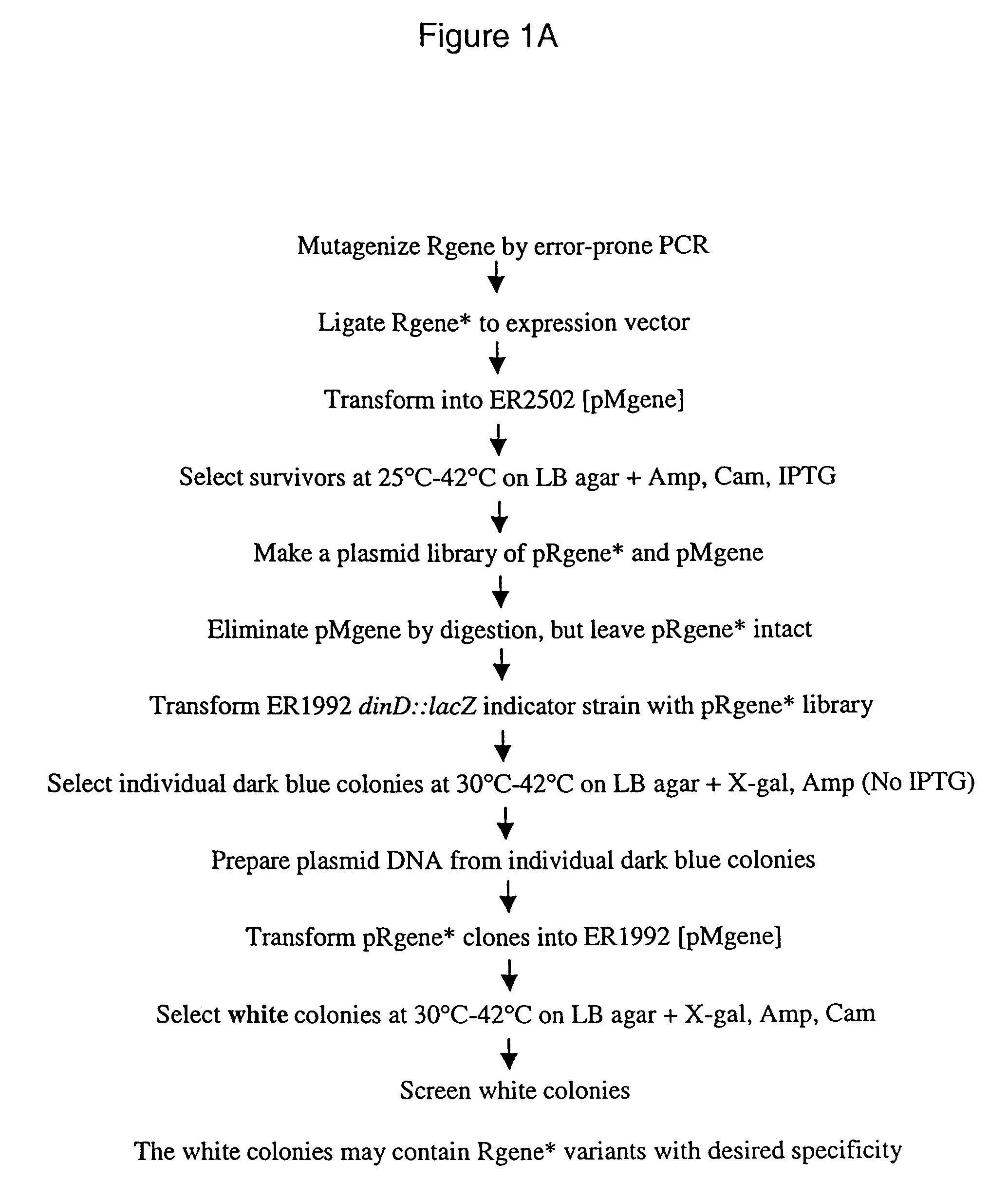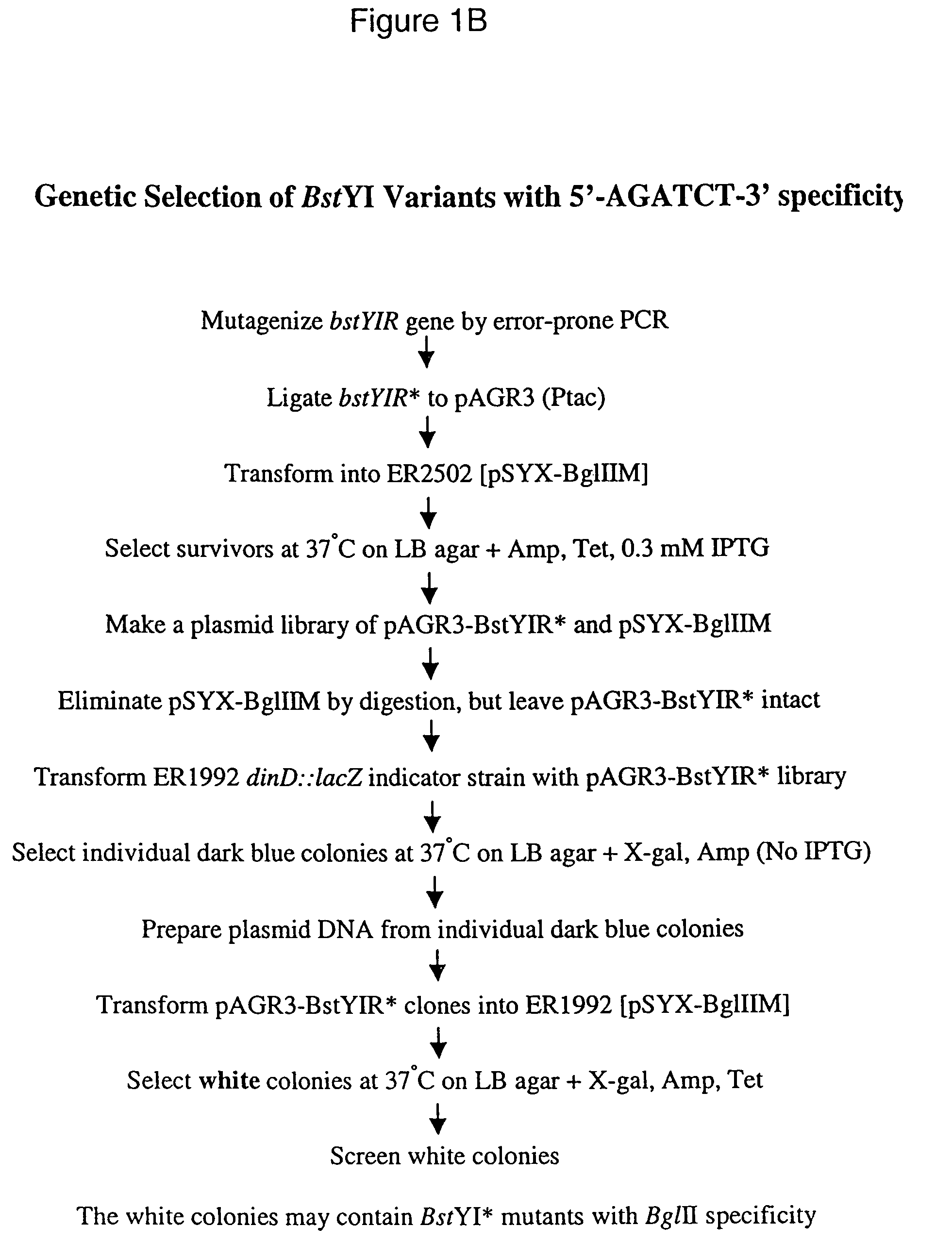Alteration of restriction endonuclease specificity by genetic selection
a restriction endonuclease and genetic selection technology, applied in the field of genetic selection alteration of restriction endonuclease specificity, can solve the problems of limited success in altering the substrate specificity of an existing restriction endonuclease, strong selection pressure on non-cognate restriction activity variables, recognition of degenerate sequences often limits the utility of a restriction enzyme in laboratory applications, etc., to achieve the effect of altering the specificity of dn
- Summary
- Abstract
- Description
- Claims
- Application Information
AI Technical Summary
Benefits of technology
Problems solved by technology
Method used
Image
Examples
example 1
Alteration of BstYI Performance to 5′-AGATCT-3′ Specificity by Random Mutagenesis, Genetic Selection and Site-Directed Mutagenesis
[0067]The endonuclease BstYI recognizes and cleaves all hexanucleotide sequences described by 5′-RGATCY-3′ with similar proficiency. In this Example, the genetic selection method of the present invention was applied to isolate one or more BstYI variants with cleavage preference towards AGATCT. The sequence AGATCT (FIG. 1B) was methylated at the N4 position of cytosine by the BglII N4-cytosine methyltransferase (Brooks and Roberts, Nucleic Acids Res. 10:913–934 (1982), Erlich, et al., J. Bac. 169:939–943 (1987)). Methylation of the N4 position of cytosine is known to inhibit cleavage of the AGATCT DNA sequence by BstYI. The BglII methylase gene (bglIIM) from Bacillus globigii (ATCC 49670) was isolated from pUC-BglIIM (Anton, et al., Gene 187:19–27 (1997)) by BamHI digestion and subsequently filled-in with Klenow fragment to produce blunt ends. The blunt-en...
example 2
Selection of NotI Variants with Altered Specificity for DNA Recognition and Cleavage
[0073]The recognition sequence of NotI is 5′-GCGGCCGC-3′. Restriction endonucleases with 8-bp recognition sites are rarely found in nature. Therefore, development of such enzymes by protein engineering is of considerable commercial interest. The method of the present invention is especially suited for this type of endeavor since an extensive range of DNA methylases are available that will modify derivations of the wild-type NotI recognition sequence. However, randomly choosing a non-cognate methylase to employ in the genetic selection of NotI variants imposes an unfair bias on the evolution process. Instead, a preliminary study was conducted to isolate a NotI variant with relaxed specificity. This work was modeled after a study of EcoRI substrate specificity where important amino acid residues were identified using a DNA-damage indicator strain expressing the cognate EcoRI methylase (Heitman and Mode...
example 3
Selection of Endonuclease Variants with an Alternate Specificity for DNA Cleavage
[0079]The genetic selection method of the present invention can be applied to engineer an existing endonuclease to recognize and cleave an alternate DNA sequence. As outlined in FIG. 1A, an element of the genetic selection procedure is methylation protection of the host genomic DNA by one or more non-cognate DNA methyltransferase. The imposed DNA methylation pattern specifically protects the desired, alternate sequence(s) while allowing the cognate DNA sequence(s) to be efficiently cleaved by the wild-type endonuclease. This critical element can be verified by in vivo and in vitro studies of the non-cognate DNA methyltransferase(s) and the wild-type endonuclease. Regardless of the temperature optimum of the wild-type endonuclease, the activity of the starting mutagenic library can be attenuated to maximize the efficiency of the genetic selection process. Options include creating an amber codon within th...
PUM
| Property | Measurement | Unit |
|---|---|---|
| selection pressure | aaaaa | aaaaa |
| cleavage frequency | aaaaa | aaaaa |
| structure | aaaaa | aaaaa |
Abstract
Description
Claims
Application Information
 Login to View More
Login to View More - R&D
- Intellectual Property
- Life Sciences
- Materials
- Tech Scout
- Unparalleled Data Quality
- Higher Quality Content
- 60% Fewer Hallucinations
Browse by: Latest US Patents, China's latest patents, Technical Efficacy Thesaurus, Application Domain, Technology Topic, Popular Technical Reports.
© 2025 PatSnap. All rights reserved.Legal|Privacy policy|Modern Slavery Act Transparency Statement|Sitemap|About US| Contact US: help@patsnap.com



